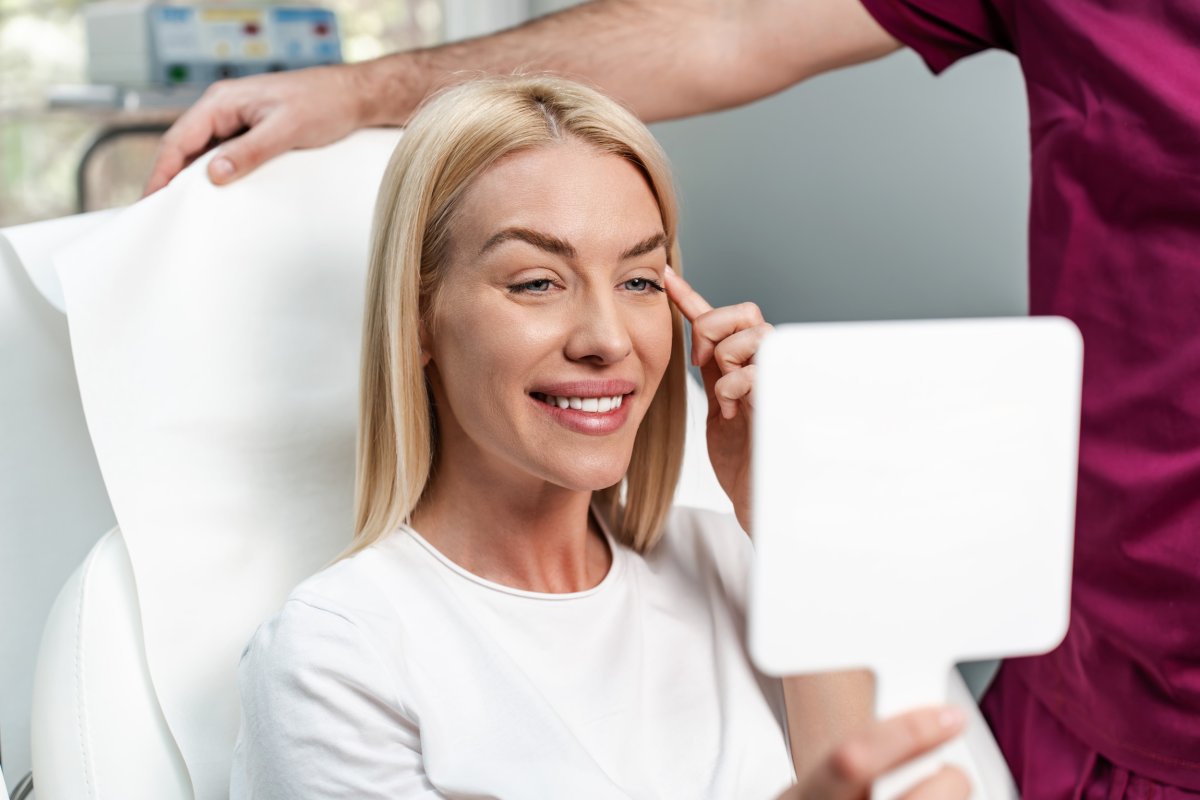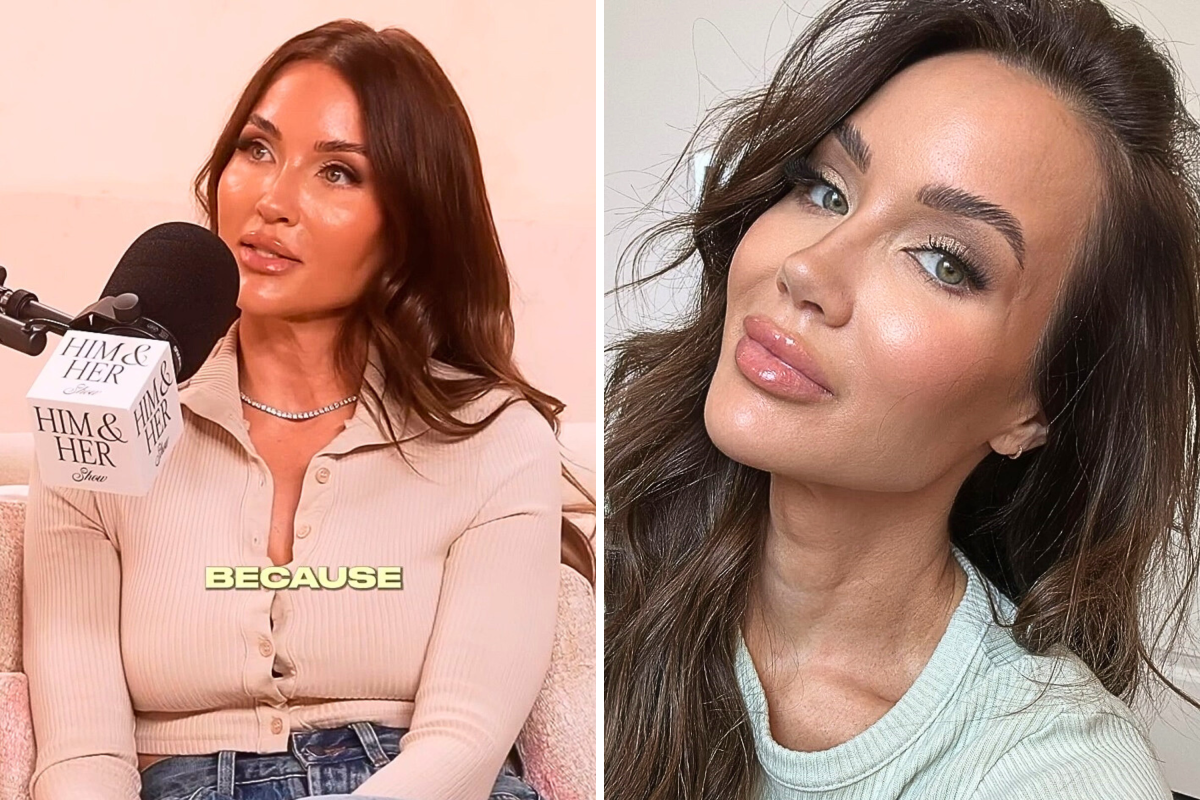Before social media, Botox was often associated with middle-aged women, but now, the injectable that temporarily reduces wrinkles appeals to a much younger audience.
The American Society of Plastic Surgeons (ASPS) 2023 report states that Gen Z is starting early to "stop wrinkles before they form." This is known as preventative Botox, but since the body's collagen production begins to decrease in your mid-20s, is it really necessary?
Although the legal age for Botox—a toxin to prevent a muscle from moving for a limited time—is 18, some experts, like makeup artist Katie Moyer from Dallas, Texas, argue that starting too early isn't a good idea.
However, two board-certified surgeons insist it does work, depending on the client.
Dynamic vs. Static Wrinkles
Dynamic wrinkles are temporary lines on the forehead, between the eyebrows (eleven lines), and around the eyes (crow's feet) when making facial expressions like smiling or frowning, disappearing when the face is relaxed, according to the University of Utah Health. People may notice these in their mid-30s.
Static wrinkles develop over time from repeated facial movements, becoming permanent and visible even when the face is resting. They tend to appear in their 40s or 50s.

Newsweek spoke to Dr. David Shafer, a double board-certified plastic surgeon, founder and medical director of Shafer Clinic Fifth Avenue. He is also a master trainer for Allergan Aesthetics, the maker of BOTOX Cosmetic.
"Botox blocks the dynamic wrinkles, so when people say prevent, it doesn't mean for people who have no wrinkles," Shafer said.
"It's for people who have dynamic wrinkles to prevent the static ones later in life."
'Botox Isn't a One-Time Solution'
But this doesn't mean getting one dose of Botox in your early 20s will lead to a wrinkle-free complexion. Botox is a costly commitment that Shafer discusses during a consultation.
"It's not an age thing, it's an anatomy thing," he said, adding: "Preventative Botox does work in the right patient."
However, he isn't afraid to turn clients away if they aren't aware of the risks and benefits and don't understand the maintenance.
The ASPS states neuromodulator injections typically cost around $435, varying by dosage, and the results typically last around three to four months.

Newsweek spoke to Steven Hanna, a Royal College-certified plastic surgeon with advanced training in aesthetic surgery from the Manhattan Eye, Ear, and Throat Hospital.
He said: "For patients in their twenties considering preventative Botox, the decision requires some deliberation. Botox isn't a one-time solution; it's a long-term commitment of both time and money, and patients should weigh this against the uncertain benefits of starting treatment early.
"I find that thorough consultations, where we discuss the nuances of their goals and concerns, are critical in helping them decide what's best for them."
Hanna said that he advises caution when it comes to the procedure solely for wrinkle prevention in younger patients unless it is for a medical condition like masseter muscle hypertrophy, which is a condition that causes a soft swelling near the angle of the jaw.
'Not a Fan'

While aesthetic practitioners argue that preventive Botox does work, Moyer, who has been in the beauty industry for 22 years, disagrees. Last month, she shared her thoughts on it during a podcast appearance.
She was interviewed by Lauryn Evarts Bosstick, the creator of The Skinny Confidential, on the Him & Her podcast. The footage has since gone viral on Instagram (@tscpodcast), gathering over 246,000 views.
During the clip, the 42-year-old said she "does not believe in preventative Botox."
She told Newsweek: "I'm certainly not a fan of early Botox. I think this idea of preventative Botox is misleading. Often times, women in their 20s are on a limited budget. They believe that getting Botox is going to serve them well into their later years.
"If you're someone who has the budget for it all...then by all means," she said. "But beware, Botox is often a gateway treatment into other injectables. It's all a slippery slope. Most of us live in such fear of aging. We are forgetting to enjoy our youth."
Prioritizing Skin Health
Moyer, who has 463,000 followers on Instagram @makeupandskinbykatie, urges young women to take care of their skin by focusing on the following healthy habits:
- Limiting sun exposure.
- Getting a good amount of sleep.
- A healthy diet.
- Microneedling: A minimally invasive procedure that uses thin needles to treat skin issues like acne scars, stretch marks, and wrinkles.
She said: "Maybe a minuscule number of women have static lines in their 20s. The vast majority don't.
"By taking preventative care of your skin prior to the implementation of Botox, you likely will not have those premature static lines. Then, when the time comes that you begin your neurotoxin regimen, your skin will be much more useful and respond to the effects of the neurotoxin in a much more holistic manner.
"For most people that get Botox or begin Botox in their late 30s or early 40s...That first dose will be enough to completely eradicate any Genesis of static lines."
If you have a personal dilemma, let us know via life@newsweek.com. We can ask experts for advice on relationships, family, friends, money and work and your story could be featured on Newsweek's "What Should I Do? section.




















 English (US) ·
English (US) ·